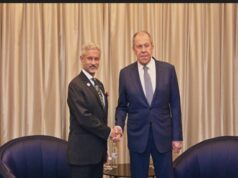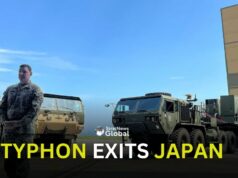West Asia must learn to deal with its own problems instead of letting outsiders interfere, argues a recent article in Foreign Affairs magazine.
For decades, the region has been a battleground for external powers, from colonial rulers carving out artificial borders to Cold War-era superpowers propping up regimes and fuelling proxy wars, says the article by Maha Yahya, Director of the Malcolm H. Kerr Carnegie Middle East Center.
In more recent times, the United States, Russia, China, and European nations have played a central role in shaping regional conflicts, whether through military interventions, arms sales, or diplomatic manoeuvring. Yahya says in the article, titled The Fatal Flaw of the New Middle East
This pattern of external involvement has led to mixed results. While some interventions have provided short-term stability, they have often exacerbated divisions and prolonged conflicts. The U.S. invasion of Iraq in 2003, for instance, dismantled a dictatorship but also unleashed sectarian violence and power struggles that continue to shape the region.
More recently, Western and Russian military campaigns in Syria, as well as the ongoing war in Yemen—fuelled by rivalries between Iran and Saudi Arabia—demonstrate how foreign involvement often deepens regional instability rather than resolving it.
One of the core arguments made in the article is that West Asian nations have become overly dependent on outside powers to mediate disputes, provide security, and even sustain their economies.
This has created a cycle where regional leaders look outward for solutions rather than engaging in meaningful diplomacy with their neighbours. The reliance on U.S. security guarantees, for instance, has allowed Gulf states to avoid difficult political compromises. Similarly, Iran and its allies have leaned on Russian and Chinese support to counterbalance Western pressure.
Yet this dependence comes with consequences. External powers often pursue their own interests rather than those of the region. Washington’s priorities in West Asia, for example, have historically shifted based on domestic politics—whether it was the post-9/11 war on terror, securing oil supplies, or containing Iran. Meanwhile, Russia and China have increased their regional influence, but their long-term commitment to stability remains uncertain.
The article argues that if West Asia is to achieve long-term stability, its leaders must take ownership of their security and political future.
This means strengthening regional institutions like the Arab League and the Gulf Cooperation Council (GCC), which have often been sidelined or ineffective in managing crises. Recent efforts, such as the China-brokered Saudi-Iran rapprochement, suggest that regional actors are capable of resolving disputes without Western involvement.
Additionally, economic cooperation and internal reforms are key to breaking the cycle of foreign dependency. Diversifying economies away from oil, addressing governance failures, and investing in education and technology could make West Asian states more self-reliant and resilient in the face of external pressures.
The shifting global order may force West Asia to take a more independent path. As the U.S. pivots toward countering China in the Indo-Pacific, and as Russia remains entangled in its war in Ukraine, regional players may no longer be able to count on the same level of external engagement. This could either lead to greater instability—or serve as an opportunity for West Asian nations to step up and chart their own future.
Unless and until the region stops leaning on outsiders and builds a sustainable framework for peace and security from within, it will continue to remain an unstable battlefield for foreign interests.
In a career spanning three decades and counting, Ramananda (Ram to his friends) has been the foreign editor of The Telegraph, Outlook Magazine and the New Indian Express. He helped set up rediff.com’s editorial operations in San Jose and New York, helmed sify.com, and was the founder editor of India.com.
His work has featured in national and international publications like the Al Jazeera Centre for Studies, Global Times and Ashahi Shimbun. But his one constant over all these years, he says, has been the attempt to understand rising India’s place in the world.
He can rustle up a mean salad, his oil-less pepper chicken is to die for, and all it takes is some beer and rhythm and blues to rock his soul.
Talk to him about foreign and strategic affairs, media, South Asia, China, and of course India.





